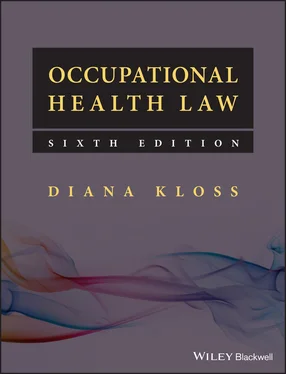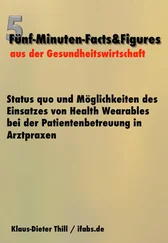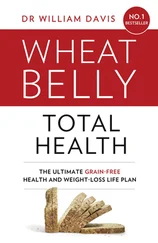In CM v. Executor of the Estate of EJ (deceased) and HM Coroner for the Southern District of London (2013) the issue was the legality of taking blood samples from a dead body. CM was a doctor who went to the assistance of a woman lying seriously injured in the street. She attempted emergency first aid but this was unsuccessful and the woman died at the scene. On returning home the doctor noticed that she had various abrasions on her hand. She commenced a course of post‐exposure prophylactic (PEP) antiviral medication to reduce the risk of HIV infection but was suffering bad side effects. She asked the coroner to authorise the taking of a blood sample from the dead body. The Human Tissue Act provides that where the patient is dead, consent must be obtained from a person with a qualifying relationship with the deceased. The problem was that the patient was a foreign national who only had one relation in the UK, a cousin of her mother. On application to the High Court, the judge held that the cousin was sufficiently close to have a qualifying relationship and authorised the blood test. It showed that the deceased was not carrying a blood‐borne virus and the doctor was able to stop taking the PEP drugs.
The testing of anonymous samples, such that the donor cannot be made aware of the result because the tester does not know his identity, is lawful, whether or not it is ethical. Testing of identified samples without the knowledge of the donor is not anonymous; the tester can identify the samples. It is the latter kind of procedure which could lead to an action in negligence, because the employee has not given informed consent.
It should be noted that when a statute provides for obligatory medical examination of workers it does not mean that they can be physically examined without their consent. Such statutes commonly provide that the worker has a statutory duty to present himself for a test, e.g. Regulation 35(5) Ionising Radiations Regulations 2017:
An employee … shall when required by his employer and at the cost of the employer, present himself during his working hours for such medical examination and tests as may be required … and shall furnish the employment medical adviser or appointed doctor with such information concerning his health as the employment medical adviser or doctor may reasonably require.
If the employee refuses, the doctor must respect that decision although the employer will then be justified in taking disciplinary action, since the employee will be in breach of the law.
Increasingly, health care workers are required by their employers to be vaccinated against communicable diseases like measles and chicken pox so as to protect patients from possible infection. Comprehensive guidance can be found in Immunisation against infectious disease: the green book (Department of Health and Social Care, 2013), which is regularly updated. Vaccination cannot be done without the health care worker’s consent, but where the employer is able to show that there is a real risk to vulnerable patients, the employer is entitled to exclude employees who refuse to be vaccinated from caring for those patients. All new employees should undergo a pre‐employment health assessment which should include a review of immunisation needs. Any vaccine‐preventable disease that is transmissible from person to person poses a risk to both health care professionals and their patients. All staff should be up to date with their routine immunisations, eg tetanus, diphtheria, polio and MMR. BCG vaccine is recommended for health care workers who may have close contact with infectious patients, especially in maternity and paediatric departments and departments where patients are likely to be immunocompromised. Varicella vaccine is recommended for susceptible health care workers who have direct patient contact. Influenza vaccination is particularly controversial. NHS employers have instituted comprehensive programmes to vaccinate health care workers annually against flu and have offered bonuses to Trusts that achieve a high percentage of take up of the vaccine. OH professionals are responsible for the administration of these programmes. Workers should be asked to consent in writing to be vaccinated and also to that information being given to the employer. Those who do not consent must be allowed to opt out but they run the risk that the employer can identify them if their names do not appear on the list of those who consented and may exclude them from working with vulnerable patients.
2.9 Liability to the employer
The OH professional will have a contract with the organisation which employs him, so he will have duties both in contract and in tort. If he is employed under a contract of employment, the law implies many obligations into the relationship which form part of the agreement even if nothing has been said or written. The duty of trust and confidence discussed in Chapter 7is a good example of an implied term. One other significant duty is to take care in carrying out his job. In a case in 1956, one employee negligently injured another by reversing a vehicle into him on the employer’s premises. The employer paid compensation to the injured employee and claimed on his employer’s liability policy. Insurance companies have a right of subrogation, i.e. they take over all the rights which the insured person had when they pay out on the policy. Acting in the name of the employer, the insurance company sued the careless driver for all the loss which he had caused his employer by his negligence. The House of Lords decided that negligent employees have a duty to compensate their employer for the damages he has been forced to pay because of their carelessness ( Lister v. Romford Ice and Cold Storage (1957)). After establishing the point of principle, the insurance companies indicated that they would not in future reimburse themselves by pursuing employees, unless there was wilful misconduct or collusion. Also, in the later case of Morris v. Ford Motor Co . (1973), the Court of Appeal refused to allow an insurance company to sue the driver of a forklift truck who had negligently injured the employee of a subcontractor.
Thus, where an employer is insured against liability to his employees caused by the negligence of directly employed OH personnel (as is required by the Employers’ Liability (Compulsory Insurance) Act 1969), it is unlikely that an indemnity will be obtained by the employer’s insurance company from the health professional’s protection society or professional indemnity policy. Before 1990, hospital doctors working in the NHS were required by their contracts of employment to take out policies with defence organisations so that the employer could obtain indemnity if the doctor was negligent. This system was abandoned from 1 January 1990 (HC(89)34).
2.10 Liability to the public
The health professional does not have a legal duty to provide medical care for those whom he has not accepted as patients. There is no duty in English law to act as a Good Samaritan and go to the aid of someone lying seriously injured in the street, though there may be an ethical duty, but if you do assist, you will have an obligation to take reasonable care. What if an employee of a subcontractor, or a visiting member of the public, is taken ill or has an accident on the premises where the OH doctor or nurse is at work? The BMA in The Occupational Physician advises that the OH doctor takes full medical responsibility only for those working on site, including contractors, but to the extent that he is concerned with the effect of work on health, he is advised that included therein is the health of the public at large, either in general or as individuals.
It is unlikely that a health professional would be held to owe a legal duty to the general public. His obligation to the wider community is a moral and ethical duty. In an extreme case, it might oblige him, against the wishes of his employer, to reveal dangers to the public of which they are in ignorance ( Chapter 3). Mostly, of course, the OH professional is unable to do more than advise and warn, but should do whatever is reasonable in all the circumstances of the case.
Читать дальше












